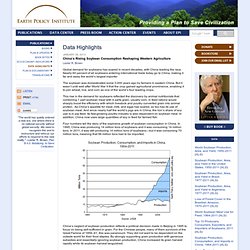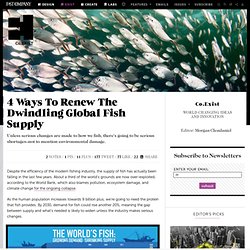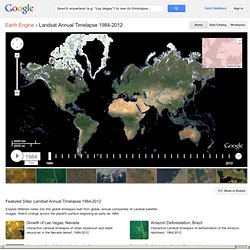

Climate change: Apocalyptish. Big Trouble in Farmville. NGURDOTO, Tanzania — The snow-crest of Africa's highest peak Mount Kilimanjaro glints fleetingly above a wooded ridge before being concealed in morning clouds.

The landscape is surprisingly lush: banana, avocado, and coffee trees are flourishing under the shade of towering acacias and orange-blossomed flame trees, remnants of the forest which has been cleared to make room for the region's growing population. My guide is Amani Peter, a thin-faced young farmer from Ngurdoto, a village perched on the slopes of Mount Meru near the northern Tanzanian city of Arusha.
"My parent's generation used to plant by the calendar in early-March," Peter says gesturing toward the green blades of maize poking up hopefully between clods of dark volcanic soil on his shamba, or small family farm. "But this year, the rains began in February, nearly a month early, and nobody knows when they will end, or if they will be sufficient. " Welcome to climate change's African front line. TONY KARUMBA/AFP/Getty Images. Panel’s Warning on Climate Risk: Worst Is Yet to Come.
Data Highlights - 34: China’s Rising Soybean Consumption Reshaping Western Agriculture. January 08, 2013 China’s Rising Soybean Consumption Reshaping Western Agriculture Lester R.

Brown Global demand for soybeans has soared in recent decades, with China leading the race. Nearly 60 percent of all soybeans entering international trade today go to China, making it far and away the world’s largest importer. The soybean was domesticated some 3,000 years ago by farmers in eastern China. This rise in the demand for soybeans reflected the discovery by animal nutritionists that combining 1 part soybean meal with 4 parts grain, usually corn, in feed rations would sharply boost the efficiency with which livestock and poultry converted grain into animal protein.
Four numbers tell the story of the explosive growth of soybean consumption in China. China’s neglect of soybean production reflects a political decision made in Beijing in 1995 to focus on being self-sufficient in grain. Costs of natural disasters in China surge to $69 billion. 4 Ways To Renew The Dwindling Global Fish Supply. Despite the efficiency of the modern fishing industry, the supply of fish has actually been falling in the last few years.

About a third of the world's grounds are now over-exploited, according to the World Bank, which also blames pollution, ecosystem damage, and climate change for the ongoing collapse. As the human population increases towards 9 billion plus, we're going to need the protein that fish provides. By 2030, demand for fish could rise another 20%, meaning the gap between supply and what's needed is likely to widen unless the industry makes serious changes.
A new initiative from Bloomberg Philanthropies lays out a few ideas for what could be done. Michael Bloomberg's foundation is donating $53 million to support the work of three groups in Brazil, the Philippines, and Chile. Meanwhile, Rare, another conservation group, will focus on smaller fishers nearer the shore. Perhaps most interestingly, Bloomberg is also encouraging market-based responses to the problem. Myanmar's Struggle to Fix Its Failing Energy System and Embrace Renewables. China installed record amounts of solar power in 2013. But coal is still winning. There have been quite a few headlines lately about the record amounts of solar power getting built in China.

In 2013, the country added at least 12 gigawatts of solar capacity — 50 percent more than any country has ever built in a single year. Impressive. But let's also put this in context. China is a massive country and is building lots of everything. And last year it added far more fossil-fuel output capability than it did solar, wind, hydro and nuclear power combined. New Electric Production Capability Added in China During 2013 (Terawatt Hours) Source: CATF from China National Energy Administration website for GW, accessed January 2014. Now, a few caveats: Many of those newly built coal and gas plants were replacing older, less-efficient plants that are getting shuttered.
What about the future? The optimistic green view: Some analysts say that China can't keep burning dirty coal forever. The "coal is here to stay" view: But not everyone agrees that coal's days in China are numbered. Earth Engine. Earth Engine Access Develop, access and run algorithms on the full Earth Engine data archive, all using Google's parallel processing platform.

Access to Earth Engine is currently available as a limited release to a small group of partners. If you are interested in developing on the Earth Engine platform, let us know. Google Earth Engine brings together the world's satellite imagery — trillions of scientific measurements dating back almost 40 years — and makes it available online with tools for scientists, independent researchers, and nations to mine this massive warehouse of data to detect changes, map trends and quantify differences on the Earth's surface. Applications include: detecting deforestation, classifying land cover, estimating forest biomass and carbon, and mapping the world’s roadless areas.
New!